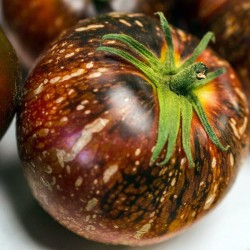Menu
-
MenuWstecz
- Home
-
Kategorie
-
-
Kategorie
-
Nasiona warzyw
-
Odmiany według kraju
- Odmiany z Armenii
- Odmiany z BiH
- Odmiany z Chorwacji
- Odmiany z Francji
- Varieties from Germany
- Varieties from Greece
- Varieties from Hungary
- Odmiany z Indii
- Varieties from Italy
- Odmiany z Japonii
- Odmiany z North Macedonii
- Varieties from Peru
- Varieties from Russia
- Varieties from Serbia
- Odmiany ze Słowenii
- Varieties from Spain
- Varieties from Thailand
- Odmiany z Turcji
- Varieties from USA
- Nasiona Pomidorów
- Nasiona kukurydzy
- Gurda rodziny
- Rodzina fasoli
- Nasiona Ogórka
- Nasiona Papryki
- Rodzina marchwi
- Rodzina cebuli
- Nasiona Sałaty
- Rodzina ziemniaków
- Rodzina kapuściana
- Nasiona Rzodkiewki
- Rodzina buraków
- Nasiona arbuza
- Nasiona melona
- Nasiona kalafiora
- Rodzina słoneczników
-
Odmiany według kraju
- Nasiona Owoców
- Nasiona Papryki Chili
- Nasiona ziół leczniczych
- Nasiona roślin pnących
- Drzewa - Krzewy - Nasiona
- Nasiona palmy
- Nasiona Traw Ozdobnych
- Nasiona tytoniu
-
Nasiona warzyw
-
-
-
-
- NOWE PRODUKTY
- Dostawa - płatność
- Utwórz konto
- FAQ
Last Product Reviews
Out of the two seeds, one germinated and the other one was dead and floatin...
By
 Riikka H on 07/03/2024
Riikka H on 07/03/2024
Verified Purchase
Jest 178 produktów.
Pokazano 166-178 z 178 pozycji
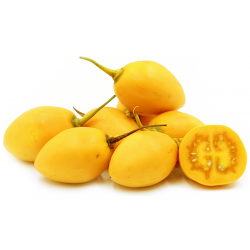
Nasiona żółty Tamarillo...
Cena
2,15 €
(SKU: V 159)
Seeds Gallery EU,
5/
5
<!DOCTYPE html>
<html>
<head>
<meta http-equiv="Content-Type" content="text/html; charset=UTF-8" />
</head>
<body>
<h2><strong>Nasiona żółty Tamarillo (Golden Tamarillo)</strong></h2>
<h2><span style="color: #ff0000;"><strong>Cena za opakowanie 5 nasion.</strong></span></h2>
<p>Nadal trudno jest znaleźć nasiona tamarillo żółty. Żółty owoc tamarillo ma kształt jajka z błyszczącą skórką mandarynki i soczystym miąższem zawierającym małe, miękkie jadalne nasiona. Skóra jest cienka i bogata w garbniki, nadająca się do spożycia przez ludzi. Dojrzały miąższ jest jasny i pikantny w smaku z przyjemnie słodkim aromatem.</p>
<p>Tamarillo złoty, nazwa botaniczna Cyphomandra betacea, jest również znany jako pomidor drzewny, jest członkiem rodziny Solanaceae, która obejmuje pomidory, ziemniaki, tytoń i pieprz.</p>
</body>
</html>
V 159 (5 S)


Roślina odporna na zimno i mróz
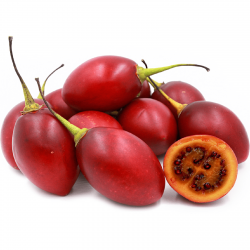
Tamarillo Seeds...
Cena
2,30 €
(SKU: V 113)
Seeds Gallery EU,
5/
5
<h2><span style="color: #000000;"><strong>Tamarillo Seeds (Cyphomandra Betacea)</strong></span></h2>
<h2><span style="color: #ff0000;"><strong>Price for Package of 5<strong> or 10 s</strong>eeds.</strong></span></h2>
<p>Cyphomandra betacea, also known as the tree tomato, or tamarillo, is a small evergreen and fast-growing tree, that originates from several regions of South America, including Peru and Chile. This small tree has large heart-shaped leaves, fragrant flowers that are borne into clusters, red edible fruits.</p>
<p>The tomato tree is frost-hardy to 26°F to 28°F (-2°C to -3°C), and will best be grown in summer.</p>
<p>Newly planted tamarillos should be pruned to a height of 3 to 4 ft. to encourage branching. Yearly pruning thereafter is advisable to eliminate branches that have already fruited and to induce ample new shoots close to the main branches, since fruit is produced on new growth. Pruning also aids in harvesting, and if timed properly can extend the total fruiting period.</p>
<p>Hardiness Zone US 8-11 Aus 2-5 </p>
<div>
<h2><strong>WIKIPEDIA:</strong></h2>
<div><span>The </span><b>tamarillo</b><span> is a small tree or </span>shrub<span> in the </span>flowering plant<span> family </span>Solanaceae<span> (the nightshade family). It is best known as the species that bears the </span><b>tamarillo</b><span>, an egg-shaped edible </span>fruit<span>.</span><sup id="cite_ref-tamarillocom_2-0" class="reference">[2]</sup><span> It is also known as the </span><b>tree tomato</b><span>,</span><sup id="cite_ref-3" class="reference">[3]</sup><span> </span><b>tomate andino</b><span>, </span><b>tomate serrano</b><span>, </span><b>tomate de yuca</b><span>, </span><b>sachatomate</b><span>, </span><b>berenjena</b><span>, </span><b>tamamoro</b><span>, and </span><b>tomate de árbol</b><span> in South America.</span></div>
<div></div>
<div>
<h3><span class="mw-headline" id="Plant_origin_and_regions_of_cultivation">Plant origin and regions of cultivation</span></h3>
<p>The tamarillo is native to the Andes of Ecuador, Colombia, Peru, Chile, and Bolivia. Today it is still cultivated in gardens and small orchards for local production,<sup id="cite_ref-SmallFruitsReview_4-0" class="reference">[4]</sup> and it is one of the most popular fruits in these regions.<sup id="cite_ref-economicBotany_5-0" class="reference">[5]</sup> Other regions of cultivation are the subtropical areas throughout the world, such as Rwanda, South Africa, Darjeeling and Sikkim in India, Nepal, Hong Kong, China, the United States, Australia, Bhutan and New Zealand.<sup id="cite_ref-SmallFruitsReview_4-1" class="reference">[4]</sup></p>
<p>The first internationally marketed crop of tamarillos in Australia was produced around 1996, although permaculture and exotic fruit enthusiasts had increasingly grown the fruit around the country from the mid-1970s on.</p>
<p>In New Zealand, about 2,000 tons are produced on 200 hectares of land and exported to the United States, Japan<sup id="cite_ref-LostCrops_6-0" class="reference">[6]</sup> and Europe. For the export, the existing marketing channels developed for the kiwifruit are used.<sup id="cite_ref-SmallFruitsReview_4-2" class="reference">[4]</sup></p>
<p>The tamarillo is also successfully grown at higher elevations of Malaysia and the Philippines, and in Puerto Rico.<sup id="cite_ref-economicBotany_5-1" class="reference">[5]</sup> In the hot tropical lowlands, it develops only small fruits and fruit setting is seldom.</p>
<p>Prior to 1967, the tamarillo was known as the "tree tomato" in New Zealand, but a new name was chosen by the New Zealand Tree Tomato Promotions Council in order to distinguish it from the ordinary garden tomatoand increase its exotic appeal.</p>
</div>
<span style="color: #ff0000;"><span style="color: #ff0000;"><strong></strong></span></span>
<h3><span class="mw-headline" id="Plant">Plant</span></h3>
<span style="color: #ff0000;"><span style="color: #ff0000;"><strong></strong></span></span>
<div class="thumb tright">
<div class="thumbinner"><img alt="" src="https://upload.wikimedia.org/wikipedia/commons/thumb/3/31/Cyphomandra_betacea1.jpg/220px-Cyphomandra_betacea1.jpg" width="220" height="165" class="thumbimage">
<div class="thumbcaption">
<div class="magnify"></div>
Flower cluster</div>
</div>
</div>
<span style="color: #ff0000;"><span style="color: #ff0000;"><strong></strong></span></span>
<p>The plant is a fast-growing tree that grows up to 5 meters. Peak production is reached after 4 years,<sup id="cite_ref-LostCrops_6-1" class="reference">[6]</sup> and the life expectancy is about 12 years.<sup id="cite_ref-SmallFruitsReview_4-3" class="reference">[4]</sup> The tree usually forms a single upright trunk with lateral branches. The flowers and fruits hang from the lateral branches. The leaves are large, simple and perennial, and have a strong pungent smell.<sup id="cite_ref-LostCrops_6-2" class="reference">[6]</sup> The flowers are pink-white, and form clusters of 10 to 50 flowers. They produce 1 to 6 fruits per cluster. Plants can set fruit without cross-pollination, but the flowers are fragrant and attract insects. Cross-pollination seems to improve fruit set.<sup id="cite_ref-LostCrops_6-3" class="reference">[6]</sup> The roots are shallow and not very pronounced, therefore the plant is not tolerant of drought stress and can be damaged by strong winds. Tamarillos will hybridize with many other solanaceae, though the hybrid fruits will be sterile, and unpalatable in some instances.</p>
<span style="color: #ff0000;"><span style="color: #ff0000;"><strong></strong></span></span>
<h3><span class="mw-headline" id="Fruit">Fruit</span></h3>
<span style="color: #ff0000;"><span style="color: #ff0000;"><strong></strong></span></span>
<div class="thumb tright">
<div class="thumbinner"><img alt="" src="https://upload.wikimedia.org/wikipedia/commons/thumb/9/9a/Solanum_betaceum_unripe_fruits.jpg/220px-Solanum_betaceum_unripe_fruits.jpg" width="220" height="146" class="thumbimage">
<div class="thumbcaption">
<div class="magnify"></div>
Unripe fruits</div>
</div>
</div>
<span style="color: #ff0000;"><span style="color: #ff0000;"><strong></strong></span></span>
<div class="thumb tright">
<div class="thumbinner"><img alt="" src="https://upload.wikimedia.org/wikipedia/commons/thumb/0/00/Tamarillos%28janek2005%29.jpg/220px-Tamarillos%28janek2005%29.jpg" width="220" height="182" class="thumbimage">
<div class="thumbcaption">
<div class="magnify"></div>
Ripe fruits</div>
</div>
</div>
<span style="color: #ff0000;"><span style="color: #ff0000;"><strong></strong></span></span>
<p>The fruits are egg-shaped and about 4-10 centimeters long. Their color varies from yellow and orange to red and almost purple. Sometimes they have dark, longitudinal stripes. Red fruits are more acetous, yellow and orange fruits are sweeter. The flesh has a firm texture and contains more and larger seeds than a common tomato.<sup id="cite_ref-SmallFruitsReview_4-4" class="reference">[4]</sup> The fruits are very high in vitamins and iron and low in calories (only about 40 calories per fruit).</p>
<span style="color: #ff0000;"><span style="color: #ff0000;"><strong></strong></span></span>
<h3><span class="mw-headline" id="Soil_and_climate_requirements">Soil and climate requirements</span></h3>
<span style="color: #ff0000;"><span style="color: #ff0000;"><strong></strong></span></span>
<p>The tamarillo prefers subtropical climate, with rainfall between 600 and 4000 millimeters and annual temperatures between 15 and 20 °C.<sup id="cite_ref-SmallFruitsReview_4-6" class="reference">[4]</sup> It is intolerant to frost (below -2 °C) and drought stress. It is assumed that fruit set is affected by night temperatures. Areas where citrus are cultivated provide good conditions for tamarillos as well, such as in the Mediterranean climate. Tamarillo plants grow best in light, deep, fertile soils, although they are not very demanding. However, soils must be permeable since the plants are not tolerant to water-logging.<sup id="cite_ref-SmallFruitsReview_4-7" class="reference">[4]</sup> They grow naturally on soils with a pH of 5 to 8.5.</p>
<span style="color: #ff0000;"><span style="color: #ff0000;"><strong></strong></span></span>
<h3><span class="mw-headline" id="Growth">Growth</span></h3>
<span style="color: #ff0000;"><span style="color: #ff0000;"><strong></strong></span></span>
<p>Propagation is possible by both using seeds or cuttings.<sup id="cite_ref-SmallFruitsReview_4-8" class="reference">[4]</sup><sup id="cite_ref-7" class="reference">[7]</sup> Seedlings first develop a straight, about 1.5 to 1.8 meters tall trunk, before they branch out. Propagation by seeds is easy and ideal in protected environments. However, in orchards with different cultivars, cross-pollination will occur and characteristics of the cultivars get mixed up. Seedlings should be kept in the nursery until they reach a height of 1 to 1.5 meters, as they are very frost-sensitive.</p>
<span style="color: #ff0000;"><span style="color: #ff0000;"><strong></strong></span></span>
<p>Plants grown from cuttings branch out earlier and result in more shrub-like plants that are more suitable for exposed sites. Cuttings should be made from basal and aerial shoots, and should be free of pathogenic viruses. Plants grown from cuttings should be kept in the nursery until they reach a height of 0.5 to 1 meter.</p>
<span style="color: #ff0000;"><span style="color: #ff0000;"><strong></strong></span></span>
<p>The tree grows very quickly and is able to bear fruit after 1.5 to 2 years.<sup id="cite_ref-economicBotany_5-2" class="reference">[5]</sup> The plant is daylength-insensitive. The fruits do not mature simultaneously, unless the tree has been pruned. A single tree can produce more than 20 kg of fruit per year; an orchard yields in 15 to 17 tons per hectare.<sup id="cite_ref-LostCrops_6-5" class="reference">[6]</sup> One single mature tree in good soil will bear more fruit than a typical family can eat in about 3 months.</p>
<span style="color: #ff0000;"><span style="color: #ff0000;"><strong></strong></span></span>
<p>Tamarillos are suitable for growing as indoor container plants, though their swift growth, their light, water and humidity requirements and their large leaves can pose a challenge to those with limited space.</p>
<span style="color: #ff0000;"><span style="color: #ff0000;"><strong></strong></span></span>
<h3><span class="mw-headline" id="Plant_management">Plant management</span></h3>
<span style="color: #ff0000;"><span style="color: #ff0000;"><strong></strong></span></span>
<div class="thumb tright">
<div class="thumbinner"><img alt="" src="https://upload.wikimedia.org/wikipedia/commons/thumb/0/0a/Cyphomandra_betacea2.jpg/220px-Cyphomandra_betacea2.jpg" width="220" height="293" class="thumbimage">
<div class="thumbcaption">
<div class="magnify"></div>
Tamarillo tree</div>
</div>
</div>
<span style="color: #ff0000;"><span style="color: #ff0000;"><strong></strong></span></span>
<p>The tamarillo trees are adaptable and very easy to grow. However, some plant management strategies can help to stabilize and improve plant performance.</p>
<span style="color: #ff0000;"><span style="color: #ff0000;"><strong></strong></span></span>
<h4><span class="mw-headline" id="Planting">Planting</span></h4>
<span style="color: #ff0000;"><span style="color: #ff0000;"><strong></strong></span></span>
<p>Planting distances depend on the growing system. In New Zealand, with mechanized production, single row planting distances of 1 to 1.5 meters between plants and 4.5 to 5 meters between rows are recommended. In traditional growing regions such as the Andean region, plantations are much more dense, with 1.2 to 1.5 meters between plants. Dense planting can be a strategy to protect plants against wind.<sup id="cite_ref-SmallFruitsReview_4-9" class="reference">[4]</sup> On poorly drained soils, plants should be planted on ridges.</p>
<span style="color: #ff0000;"><span style="color: #ff0000;"><strong></strong></span></span>
<h4><span class="mw-headline" id="Pruning">Pruning</span></h4>
<span style="color: #ff0000;"><span style="color: #ff0000;"><strong></strong></span></span>
<p>Pruning can help to control fruit size, plant size, harvest date and to simplify the harvesting of fruits.<sup id="cite_ref-SmallFruitsReview_4-10" class="reference">[4]</sup> Cutting the tip of young plants leads to the desired branch height. Once the tree shape has been formed, pruning is reduced to the removal of old or dead wood and previously fruited branches, since branches that have already carried fruits will produce smaller fruits with lower quality the next time. Light pruning leads to medium-sized, heavy pruning to large sized fruits. Basal shoots should be removed. When plants are grown in greenhouses, pruning prevents excessive vegetative growth.</p>
<span style="color: #ff0000;"><span style="color: #ff0000;"><strong></strong></span></span>
<p>When the tree is about 1 to 1.5 metres in height, it is advisable to cut the roots on one side and lean the tree to the other (in the direction of the midday sun at about 30 to 45 degrees). This allows fruiting branches to grow all along the trunk rather than just at the top.</p>
<span style="color: #ff0000;"><span style="color: #ff0000;"><strong></strong></span></span>
<div class="thumb tright">
<div class="thumbinner"><img alt="" src="https://upload.wikimedia.org/wikipedia/commons/thumb/e/e3/Tamarillo_seedlings%2C_6_months_old.jpg/220px-Tamarillo_seedlings%2C_6_months_old.jpg" width="220" height="215" class="thumbimage">
<div class="thumbcaption">
<div class="magnify"></div>
Tamarillo seedlings, 6 months old</div>
</div>
</div>
<span style="color: #ff0000;"><span style="color: #ff0000;"><strong></strong></span></span>
<h4><span class="mw-headline" id="Mulching">Mulching</span></h4>
<span style="color: #ff0000;"><span style="color: #ff0000;"><strong></strong></span></span>
<p>Since the plants are sensitive to drought stress, mulching can help to preserve moisture in the soil.<sup id="cite_ref-LostCrops_6-6" class="reference">[6]</sup> It can also be a strategy to suppress weeds, as other soil management techniques, such as plowing, are not possible due to the shallow and sensitive root system.</p>
<span style="color: #ff0000;"><span style="color: #ff0000;"><strong></strong></span></span>
<h4><span class="mw-headline" id="Shelter">Shelter</span></h4>
<span style="color: #ff0000;"><span style="color: #ff0000;"><strong></strong></span></span>
<p>The plants have to be protected from wind. Their shallow root system does not provide enough stability, and the lateral branches are fragile and break easily when carrying fruits.<sup id="cite_ref-SmallFruitsReview_4-11" class="reference">[4]</sup></p>
<span style="color: #ff0000;"><span style="color: #ff0000;"><strong></strong></span></span>
<h4><span class="mw-headline" id="Irrigation_and_fertilization">Irrigation and fertilization</span></h4>
<span style="color: #ff0000;"><span style="color: #ff0000;"><strong></strong></span></span>
<p>To maximize and stabilize production, water and nutrient inputs should be provided when needed. The plants need continuous supply of water due to their shallow root system. Drought stress results in a decrease of plant growth, fruit size and productivity.<sup id="cite_ref-SmallFruitsReview_4-12" class="reference">[4]</sup> Recommended fertilizer rates per hectare are 170 kg of Nitrogen, 45 kg of Phosphorus and 130 to 190 kg of Potassium for intensive New Zealand production systems. Phosphorus and Potassium are applied in the beginning of the season, Nitrogen applications are distributed throughout the year.<sup id="cite_ref-SmallFruitsReview_4-13" class="reference">[4]</sup></p>
<span style="color: #ff0000;"><span style="color: #ff0000;"><strong></strong></span></span>
<h4><span class="mw-headline" id="Pest_management">Pest management</span></h4>
<span style="color: #ff0000;"><span style="color: #ff0000;"><strong></strong></span></span>
<p>The tamarillo tree is, compared to similar crops such as tomatoes, quite resistant to pests in general. Still, to reduce risk in intensive production systems, some pests have to be controlled to avoid major crop damage. To control pests, the same control methods as for other solanaceae can be used.</p>
<span style="color: #ff0000;"><span style="color: #ff0000;"><strong></strong></span></span>
<h3><span class="mw-headline" id="Harvest">Harvest</span></h3>
<span style="color: #ff0000;"><span style="color: #ff0000;"><strong></strong></span></span>
<p>Ripening of fruits is not simultaneous. Several harvests are necessary.<sup id="cite_ref-8" class="reference">[8]</sup> In climates with little annual variation, tamarillo trees can flower and set fruit throughout the year. In climates with pronounced seasons (such as New Zealand), fruits ripen in autumn. Premature harvest and ethylene induced ripening in controlled-atmosphere chambers is possible with minimal loss of fruit quality.<sup id="cite_ref-Ripening_9-0" class="reference">[9]</sup> The fragile lateral branches can break easily when loaded with fruits, so premature harvest helps to reduce this risk and allows storage of fruits up to 20 days at room temperature. A cold-water dipping process, developed by the New Zealand Department of Scientific and Industrial Research also allows further storage of 6–10 weeks.<sup id="cite_ref-SmallFruitsReview_4-14" class="reference">[4]</sup></p>
<span style="color: #ff0000;"><span style="color: #ff0000;"><strong></strong></span></span>
<h2><span class="mw-headline" id="Usage">Usage</span></h2>
<span style="color: #ff0000;"><span style="color: #ff0000;"><strong></strong></span></span>
<h3><span class="mw-headline" id="Culinary_use">Culinary use</span></h3>
<span style="color: #ff0000;"><span style="color: #ff0000;"><strong></strong></span></span>
<p>The fruit is eaten by scooping the flesh from a halved fruit. When lightly sugared and cooled, the flesh is used for a breakfast dish. Some people in New Zealand cut the fruit in half, scoop out the pulpy flesh and spread it on toast at breakfast. Yellow-fruited cultivars have a sweeter flavor, occasionally compared to mango or apricot. The red-fruited variety, which is much more widely cultivated, is more tart, and the savory aftertaste is far more pronounced. In the Northern Hemisphere, tamarillos are most frequently available from July until November, and fruits early in the season tend to be sweeter and less astringent.</p>
<span style="color: #ff0000;"><span style="color: #ff0000;"><strong></strong></span></span>
<p>They can be made into compotes, or added to stews (e.g. Boeuf Bourguignon), hollandaise, chutneys and curries. Desserts using this fruit include bavarois and, combined with apples, a strudel.</p>
<span style="color: #ff0000;"><span style="color: #ff0000;"><strong></strong></span></span>
<p>Tamarillos can be added as a secondary fermentation flavouring to Kombucha Tea for a tart and tangy taste. The fruit should be mashed and added at a ratio of 3 Tamarillos to 1 Litre of Kombucha, however great care should be taken to not allow too much carbon dioxide gas to build up in sealed bottles during secondary fermentation. The sugar content of fresh Tamarillos added to Kombucha can generate a rapid carbon dioxide production in secondary fermentation within just 48–72 hours.</p>
<span style="color: #ff0000;"><span style="color: #ff0000;"><strong></strong></span></span>
<p>In Colombia, Ecuador, Panama and parts of Indonesia (including Sumatra and Sulawesi), fresh tamarillos are frequently blended together with water and sugar to make a juice. It is also available as a commercially pasteurized purée.</p>
<span style="color: #ff0000;"><span style="color: #ff0000;"><strong></strong></span></span>
<p>In Nepal, a version of the South American fruit is decently popular. It is typically consumed as a chutney or a pickle during the autumn and winter months. It is known as <i>Tammatar</i> and <i>Ram Bheda</i>. Similar to Nepal, the Indian regions of Ooty, Darjeeling and Sikkim also consume Tamarillo.</p>
<span style="color: #ff0000;"><span style="color: #ff0000;"><strong></strong></span></span>
<p>In Ecuador, the tamarillo, known as <i>tomate de árbol</i>, is blended with chili peppers to make a hot sauce commonly consumed with local dishes of the Andean region. The sauce is simply referred to as <i>aji</i> and is present at every meal in Ecuador.</p>
<span style="color: #ff0000;"><span style="color: #ff0000;"><strong></strong></span></span>
<p>The flesh of the tamarillo is tangy and variably sweet, with a bold and complex flavor, and may be compared to kiwifruit, tomato, guava, or passion fruit. The skin and the flesh near it have a bitter taste and are not usually eaten raw</p>
<span style="color: #ff0000;"><span style="color: #ff0000;"><strong></strong></span></span>
<p>The tamarillo has been described as having a taste similar to that of a passion fruit and a piquant tomato combined.<sup class="noprint Inline-Template Template-Fact">[<i><span title="This claim needs references to reliable sources. (January 2009)">citation needed</span></i>]</sup></p>
<span style="color: #ff0000;"><span style="color: #ff0000;"><strong></strong></span></span>
<p>The red and purple types of fruits are preferred in import countries of Europe: Even though they taste more acidic, their color is favoured by consumers.<sup id="cite_ref-SmallFruitsReview_4-15" class="reference">[4]</sup></p>
<span style="color: #ff0000;"><span style="color: #ff0000;"><strong></strong></span></span>
<h3><span class="mw-headline" id="Industrial_use">Industrial use</span></h3>
<span style="color: #ff0000;"><span style="color: #ff0000;"><strong></strong></span></span>
<p>The fruits are high in pectin and therefore have good properties for preserves. However, they oxidize and lose color when not treated. Yellow fruit types are better suited to industrial use.</p>
<span style="color: #ff0000;"><span style="color: #ff0000;"><strong></strong></span></span>
<h2><span class="mw-headline" id="Prospects">Prospects</span></h2>
<span style="color: #ff0000;"><span style="color: #ff0000;"><strong></strong></span></span>
<p>Research and breeding should improve plantation management, fruit quality and postharvest treatment.<sup id="cite_ref-LostCrops_6-7" class="reference">[6]</sup> A better understanding of plant physiology, nutritional requirements of plants and fruit set mechanisms will help to improve growing systems. Breeding goals are to break seed dormancy, to improve sweetness of fruits and to increase yield. For industrial uses, little "stones" of sodium and calcium that occasionally appear in the fruit skin form a problem. Those stones have to be eliminated by breeding.</p>
<span style="color: #ff0000;"><strong><br></strong></span></div>
<div></div><script src="//cdn.public.n1ed.com/G3OMDFLT/widgets.js"></script>
V 113 (10 S)


Odmiana ze Stanów Zjednoczonych Ameryki

1500 nasion Heinz 1350 Tomato
Cena
12,95 €
(SKU: VT 101 (5g))
Seeds Gallery EU,
5/
5
<h2><strong>1500 nasion Heinz 1350 Tomato</strong></h2>
<h2><span style="color: #ff0000;"><strong>Cena za opakowanie 1500 (5g) nasion.</strong></span></h2>
<p><span class="VIiyi" jsaction="mouseup:BR6jm" jsname="jqKxS" lang="pl"><span jsaction="agoMJf:PFBcW;usxOmf:aWLT7;jhKsnd:P7O7bd,F8DmGf;Q4AGo:Gm7gYd,qAKMYb;uFUCPb:pvnm0e,pfE8Hb,PFBcW;f56efd:dJXsye;EnoYf:KNzws,ZJsZZ,JgVSJc;zdMJQc:cCQNKb,ZJsZZ,zchEXc;Ytrrj:JJDvdc;tNR8yc:GeFvjb;oFN6Ye:hij5Wb" jscontroller="Zl5N8" jsmodel="SsMkhd" jsname="txFAF" class="JLqJ4b ChMk0b" data-language-for-alternatives="pl" data-language-to-translate-into="en" data-phrase-index="4" jsdata="uqLsIf;_;$75"><span jsaction="click:qtZ4nf,GFf3ac,tMZCfe; contextmenu:Nqw7Te,QP7LD; mouseout:Nqw7Te; mouseover:qtZ4nf,c2aHje" jsname="W297wb">Rozsmakuj się w klasycznym smaku pomidorów, dodając tę pamiątkę do swojego ogrodu.</span></span> <span jsaction="agoMJf:PFBcW;usxOmf:aWLT7;jhKsnd:P7O7bd,F8DmGf;Q4AGo:Gm7gYd,qAKMYb;uFUCPb:pvnm0e,pfE8Hb,PFBcW;f56efd:dJXsye;EnoYf:KNzws,ZJsZZ,JgVSJc;zdMJQc:cCQNKb,ZJsZZ,zchEXc;Ytrrj:JJDvdc;tNR8yc:GeFvjb;oFN6Ye:hij5Wb" jscontroller="Zl5N8" jsmodel="SsMkhd" jsname="txFAF" class="JLqJ4b ChMk0b" data-language-for-alternatives="pl" data-language-to-translate-into="en" data-phrase-index="5" jsdata="uqLsIf;_;$76"><span jsaction="click:qtZ4nf,GFf3ac,tMZCfe; contextmenu:Nqw7Te,QP7LD; mouseout:Nqw7Te; mouseover:qtZ4nf,c2aHje" jsname="W297wb">Jedna z pierwszych odmian pomidorów wyhodowanych przez Heinza, która została użyta do produkcji keczupu Heinz, pomidor Heinz Classic Heirloom (znany również jako Heinz 1370) oferuje bogaty smak pomidorów w dużych (około 170g), soczystych owocach, idealnych do pokrojenia na kanapki lub gotowania</span></span> <span jsaction="agoMJf:PFBcW;usxOmf:aWLT7;jhKsnd:P7O7bd,F8DmGf;Q4AGo:Gm7gYd,qAKMYb;uFUCPb:pvnm0e,pfE8Hb,PFBcW;f56efd:dJXsye;EnoYf:KNzws,ZJsZZ,JgVSJc;zdMJQc:cCQNKb,ZJsZZ,zchEXc;Ytrrj:JJDvdc;tNR8yc:GeFvjb;oFN6Ye:hij5Wb" jscontroller="Zl5N8" jsmodel="SsMkhd" jsname="txFAF" class="JLqJ4b ChMk0b" data-language-for-alternatives="pl" data-language-to-translate-into="en" data-phrase-index="6" jsdata="uqLsIf;_;$77"><span jsaction="click:qtZ4nf,GFf3ac,tMZCfe; contextmenu:Nqw7Te,QP7LD; mouseout:Nqw7Te; mouseover:qtZ4nf,c2aHje" jsname="W297wb">do sosów lub gulaszu.</span></span><span jsaction="agoMJf:PFBcW;usxOmf:aWLT7;jhKsnd:P7O7bd,F8DmGf;Q4AGo:Gm7gYd,qAKMYb;uFUCPb:pvnm0e,pfE8Hb,PFBcW;f56efd:dJXsye;EnoYf:KNzws,ZJsZZ,JgVSJc;zdMJQc:cCQNKb,ZJsZZ,zchEXc;Ytrrj:JJDvdc;tNR8yc:GeFvjb;oFN6Ye:hij5Wb" jscontroller="Zl5N8" jsmodel="SsMkhd" jsname="txFAF" class="JLqJ4b" data-language-for-alternatives="pl" data-language-to-translate-into="en" data-phrase-index="7" jsdata="uqLsIf;_;$78"><span jsaction="click:qtZ4nf,GFf3ac,tMZCfe; contextmenu:Nqw7Te,QP7LD; mouseout:Nqw7Te; mouseover:qtZ4nf,c2aHje" jsname="W297wb"> </span></span></span></p>
<p><span class="VIiyi" jsaction="mouseup:BR6jm" jsname="jqKxS" lang="pl"><span jsaction="agoMJf:PFBcW;usxOmf:aWLT7;jhKsnd:P7O7bd,F8DmGf;Q4AGo:Gm7gYd,qAKMYb;uFUCPb:pvnm0e,pfE8Hb,PFBcW;f56efd:dJXsye;EnoYf:KNzws,ZJsZZ,JgVSJc;zdMJQc:cCQNKb,ZJsZZ,zchEXc;Ytrrj:JJDvdc;tNR8yc:GeFvjb;oFN6Ye:hij5Wb" jscontroller="Zl5N8" jsmodel="SsMkhd" jsname="txFAF" class="JLqJ4b ChMk0b" data-language-for-alternatives="pl" data-language-to-translate-into="en" data-phrase-index="8" jsdata="uqLsIf;_;$79"><span jsaction="click:qtZ4nf,GFf3ac,tMZCfe; contextmenu:Nqw7Te,QP7LD; mouseout:Nqw7Te; mouseover:qtZ4nf,c2aHje" jsname="W297wb">Rośliny (120-150 cm wysokości) dobrze się rozwijają w wielu regionach i dobrze przystosowują się do uprawy w dużych pojemnikach.</span></span> <span jsaction="agoMJf:PFBcW;usxOmf:aWLT7;jhKsnd:P7O7bd,F8DmGf;Q4AGo:Gm7gYd,qAKMYb;uFUCPb:pvnm0e,pfE8Hb,PFBcW;f56efd:dJXsye;EnoYf:KNzws,ZJsZZ,JgVSJc;zdMJQc:cCQNKb,ZJsZZ,zchEXc;Ytrrj:JJDvdc;tNR8yc:GeFvjb;oFN6Ye:hij5Wb" jscontroller="Zl5N8" jsmodel="SsMkhd" jsname="txFAF" class="JLqJ4b ChMk0b" data-language-for-alternatives="pl" data-language-to-translate-into="en" data-phrase-index="9" jsdata="uqLsIf;_;$80"><span jsaction="click:qtZ4nf,GFf3ac,tMZCfe; contextmenu:Nqw7Te,QP7LD; mouseout:Nqw7Te; mouseover:qtZ4nf,c2aHje" jsname="W297wb">Heinz Classic Heirloom owocuje przez cały sezon, ale najcięższą część plonu dojrzewa latem.</span></span> <span jsaction="agoMJf:PFBcW;usxOmf:aWLT7;jhKsnd:P7O7bd,F8DmGf;Q4AGo:Gm7gYd,qAKMYb;uFUCPb:pvnm0e,pfE8Hb,PFBcW;f56efd:dJXsye;EnoYf:KNzws,ZJsZZ,JgVSJc;zdMJQc:cCQNKb,ZJsZZ,zchEXc;Ytrrj:JJDvdc;tNR8yc:GeFvjb;oFN6Ye:hij5Wb" jscontroller="Zl5N8" jsmodel="SsMkhd" jsname="txFAF" class="JLqJ4b ChMk0b" data-language-for-alternatives="pl" data-language-to-translate-into="en" data-phrase-index="10" jsdata="uqLsIf;_;$81"><span jsaction="click:qtZ4nf,GFf3ac,tMZCfe; contextmenu:Nqw7Te,QP7LD; mouseout:Nqw7Te; mouseover:qtZ4nf,c2aHje" jsname="W297wb">Stawiaj te energiczne rośliny, aby uzyskać najlepsze wyniki i najłatwiejsze zbiory.</span></span></span><span> </span></p><script src="//cdn.public.n1ed.com/G3OMDFLT/widgets.js"></script>
VT 101 (5g)


Odmiana z Peru
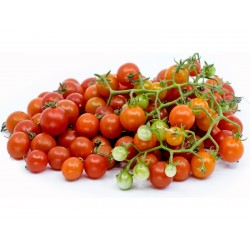
Nasiona dzikich pomidorów...
Cena
1,85 €
(SKU: VT 113)
Seeds Gallery EU,
5/
5
<h2 style="font-family: 'Helvetica Neue', Helvetica, Arial, sans-serif; color: #333333;" class=""><strong>Nasiona dzikich pomidorów (Solanum pimpinellifolium)</strong></h2>
<h2 style="font-family: 'Helvetica Neue', Helvetica, Arial, sans-serif; color: #333333;"><span style="color: #ff0303;"><strong>Cena za opakowanie 5 nasion.</strong></span></h2>
<p><strong>Drobne, pyszne czerwone pomidory, które rosną w dużych ilościach.</strong><br><br>Pomidory z czerwonej porzeczki to najmniejszy jadalny pomidor, każdy owoc waży średnio zaledwie trzy gramy i ma nieco ponad centymetr średnicy. Okrągłe, żółte owoce wyróżniają się intensywnym słodko-cierpkim smakiem i jędrną, soczystą konsystencją. Mają cienką błyszczącą skórkę z dwiema wewnętrznymi komórkami, które są zwykle ziarniste, ale mają wyjątkowo słodki, prawdziwy smak pomidora ze względu na wysoki poziom cukru i kwasu. Silne, rozłożyste, nieokreślone rośliny są odporne na choroby i wydajne, produkując obfite ilości maleńkich owoców przez cały sezon. Rośliny mają małe, delikatne liście o ostrzejszym zapachu niż inne odmiany, a łodygi roślin są drobne i chude.<br><br>Sezony / Dostępność<br><br>Pomidory z żółtej porzeczki są dostępne latem i jesienią.<br><br>Aktualne fakty<br><br>Pomidory z czerwonej porzeczki należą do dużej i różnorodnej rodziny Solanaceae, znanej również jako rodzina psiankowatych, która obejmuje ponad trzy tysiące znanych gatunków. Pomidory porzeczkowe są botanicznie nazywane Solanum Pimpinellifolium, niezależnym gatunkiem pomidora i jednym z dwóch gatunków jadalnych obok pomidora pospolitego, Lycopersicon esculentum. Miniaturowe owoce wiszą w gronach przypominających porzeczki, stąd ich nazwa. Istnieje wiele odmian pomidorów porzeczkowych, zarówno czerwonych, jak i żółtych, w tym groszku, śliwki cukrowej i hawajskiej, które są uważane za jedne z najsłodszych odmian. Pomidory porzeczkowe okazały się bardzo cenne z naukowego punktu widzenia, ponieważ są blisko spokrewnione z jednym z pierwotnych dzikich gatunków, który rośnie w pobliżu wybrzeży północnego Peru, a ich DNA jest punktem wyjścia do porównania ewolucji genów w rodzinie Solanaceae. Chociaż pomidory porzeczkowe są innym gatunkiem, z łatwością krzyżują się z pomidorami ogrodowymi, a ze względu na ich odporność na choroby i zwyczaj produkowania owoców na długich gałązkach pomidory porzeczkowe zostały skrzyżowane z innymi typami pomidorów, aby stworzyć wiele nowoczesnych odmian pomidorów koktajlowych .<br><br>Dni do dojrzałości: 60 dni<br><br>Waga owocu: 1 uncja<br><br>Słońce: Pełne słońce<br><br>Rozpiętość: 18 cali<br><br>Wysokość: 36-40 cali<br><br>Metoda wysiewu: Locha w pomieszczeniu<br><br>Czas sadzenia: wiosna<br><br>Czas siewu: 6-8 tygodni BLF<br><br>Cienki: 18 cali<br><br>Cykl życia: roczny</p><script src="//cdn.public.n1ed.com/G3OMDFLT/widgets.js"></script>
VT 113 (5 S)


Odmiana ze Stanów Zjednoczonych Ameryki
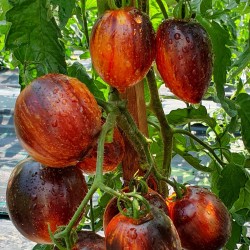
Nasiona pomidora Gargamel
Cena
1,85 €
(SKU: VT 4 G)
Seeds Gallery EU,
5/
5
<h2 class=""><strong>Nasiona pomidora Gargamel</strong></h2>
<h2><span style="color: #f80000;"><strong>Cena za Pakiet 10 nasion.</strong></span></h2>
Nowa odmiana pomidorów pochodząca z USA, od hodowców Phil Seneca (Pittsburgh, Pensylwania, USA). Ta odmiana została nazwana na cześć fikcyjnej postaci ze Smerfów. Gargamel, zły czarnoksiężnik, który jest głównym antagonistą Smerfów, nosi czarny płaszcz i czerwone buty, a czarno-czerwone kolory owocu przypominają ubrania Gargamela.<br><br>Roślina silna, wysoka, dorasta do 180 cm wysokości.<br><br>Może być uprawiana na dwóch głównych pędach i konieczne jest przycinanie.<br><br>Owoce są owalne, a niektóre z nich mają spiczaste końcówki. Waga owocu to około 3,5-4,2 uncji. (100-120 g). Kolor owocu nie pozostawi Cię obojętnym. Są czarne w pobliżu łodygi i pomarańczowe z czerwono-brązowymi paskami u góry. Owoce przypominają kwiaty w kolorze płomienia.<br><br>Smak jest słodki, owocowy i pomidorowy. Ściany są solidne i słodkie.<br><br>Ten pomidor będzie idealnym dodatkiem do Twoich potraw. Pyszne do jedzenia na świeżo.<br><br>To dobry wybór do suszenia na słońcu. Dobry wybór również do konserwowania całych owoców.
<script src="//cdn.public.n1ed.com/G3OMDFLT/widgets.js"></script>
VT 4 G (10 S)

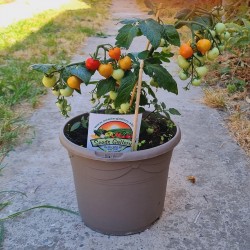
Nasiona pomidora...
Cena
2,25 €
(SKU: VT 37)
Seeds Gallery EU,
5/
5
<h2><strong>Nasiona pomidora karłowatego Evita</strong></h2>
<h2><span style="color: #f80000;"><strong>Cena za Pakiet 5 nasion.</strong></span></h2>
Pomidor sercowy Evita (Solanum lycopersicum) wytwarza małe owoce o słodkim, intensywnym smaku, które można zbierać już w lipcu. Dla optymalnego wzrostu pomidora sercowego Evita wymagane jest słoneczne miejsce i przepuszczalna, bogata w składniki odżywcze gleba.<br><br>POSŁUGIWAĆ SIĘ<br>Świeża konsumpcja, gotowanie, sałatka, sos / dip, zupa / gulasz<br><br>WZROST<br>Pionowo. Szybko rośnie.<br><br>OWOC<br>Jasnoczerwone, drobne owoce mają słodki, intensywny smak. Dojrzewają od lipca. Owoce są okrągłe, w kształcie strąków.<br><br>LOKALIZACJA<br>Preferowana lokalizacja w słonecznym miejscu.<br><br>ZIEMIA<br>Preferowana gleba bogata w próchnicę.<br><br>WODA<br>Podlewaj regularnie i pozwól glebie wyschnąć w międzyczasie.<br><br>KONSERWACJA<br>Wskazane jest rysowanie rowów irygacyjnych między rzędami, ponieważ wielu rodzajów warzyw nie należy podlewać od góry. Dodatkowo: Regularne odchwaszczanie zapobiega pozbawianiu warzyw siły chwastów.<br><br>PARTNERZY ROŚLIN<br>Dobrzy partnerzy do sadzenia: bazylia, nasturcja, pietruszka kędzierzawa, mięta pieprzowa, nagietek, nagietek, prawdziwa marzanka wonna, cynia.<br><br>CZAS SADZENIA<br>Sadzenie: od wiosny do lata.<br><br>CZAS WYSIEWU<br>Wysiać na zewnątrz w maju.<br>Nasiona przykryć ziemią 0,5 - 1 cm. Kiełkowanie odbywa się w ciągu 6-10 dni w temperaturze gleby 15°C.<script src="//cdn.public.n1ed.com/G3OMDFLT/widgets.js"></script>
VT 37 (5 S)


Odmiana z Rosji
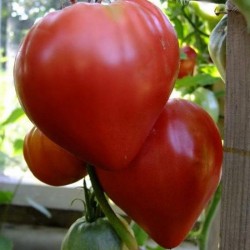
Nasiona Pomidora...
Cena
1,65 €
(SKU: VT 80)
Seeds Gallery EU,
5/
5
<h2><strong>Nasiona Pomidora Syberyjskiego Serca Orła</strong></h2>
<h2><span style="color: #f80000;"><strong>Cena za Pakiet 10 nasion.</strong></span></h2>
Pomidor Syberyjski Orzeł Serca to unikatowo kolorowe wołowe serce, które można zobaczyć.<br>W połowie sezonu, wysokowydajna, wielkoowocowa odmiana selekcji amatorskiej. 300g owoców pomidora o pięknej, wydłużonej formie w kształcie serca, różowo-karmazynowej barwie, z delikatnym słodkim miąższem. To bardzo mięsisty i gładki pomidor, który jest słodki i pyszny.<br><br>Gęsty, nie wodnisty, odporny na pękanie. Roślina potężna, bardzo odporna na choroby i niekorzystne warunki atmosferyczne. Nadaje się na otwarte pola i szklarnie.<br>80 dni.<script src="//cdn.public.n1ed.com/G3OMDFLT/widgets.js"></script>
VT 80 (10)


Odmiana z Niemiec
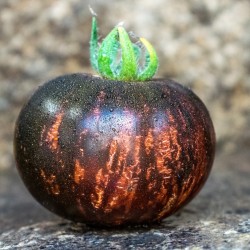
Nasiona Pomidora Królowej Nocy
Cena
1,85 €
(SKU: VT 123)
Seeds Gallery EU,
5/
5
<h2><strong>Nasiona Pomidora Królowej Nocy</strong></h2>
<h2><span style="color: #f80000;"><strong>Cena za Pakiet 10 nasion.</strong></span></h2>
Königin der Nacht - Królowa Nocy to najnowsza niebieska odmiana z okolic Renu w Niemczech. Wiemy na pewno, że ta nowa odmiana pochodzi z Niemiec z rejonu Renu i dalsze informacje nie są znane.<br><br>Okrągłe czerwono-pomarańczowe paski z bardzo silnymi niebiesko-czarnymi wpływami w górnej połowie z antocyjanów. Im bardziej owoce są wystawione na działanie promieni słonecznych, tym silniejszy jest ten przeciwutleniacz (podobnie jak jagody), tym bardziej owoce stają się niebieskie/czarne.<br><br>Miąższ gęsty, ale bardzo soczysty o mocnym smaku pomidorowym.<br><br>Średniej wielkości, nieokreślone rośliny o wysokości około 1,5 m do 1,75 m z wysokimi plonami dość wcześnie w sezonie, ale jak na odmianę niebieską.<script src="//cdn.public.n1ed.com/G3OMDFLT/widgets.js"></script>
VT 123 (10 S)


Odmiana ze Stanów Zjednoczonych Ameryki
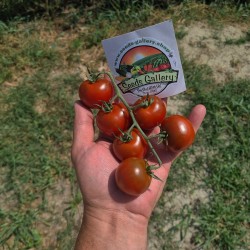
Nasiona pomidora Campari
Cena
1,85 €
(SKU: VT 124)
Seeds Gallery EU,
5/
5
<h2 class=""><strong>Nasiona pomidora Campari</strong></h2>
<h2><span style="color: #ff0000;"><strong>Cena za Pakiet 10 nasion.</strong></span></h2>
Campari to rodzaj pomidora, który charakteryzuje się soczystością, wysokim poziomem cukru, niską kwasowością i brakiem mączości. Camparis są ciemnoczerwone i większe niż pomidor koktajlowy, ale mniejsze i bardziej okrągłe niż pomidor śliwkowy. Są one często sprzedawane jako „pomidor na winorośli” (TOV) w supermarketach, kategoria pomidorów, która z biegiem lat staje się coraz bardziej popularna. Pomidory Campari mogą być produkowane z różnych odmian o podobnych właściwościach, standardem jest Mountain Magic. Jako hybryda nasiona kosztują około 150 000 USD za funt.<br><br>Firma Mastronardi Produce zarejestrowała termin „Campari” jako znak towarowy Stanów Zjednoczonych dla swoich pomidorów w 2003 roku; jednak znak towarowy został zakwestionowany w 2006 roku na podstawie twierdzeń, że „Campari” jest w rzeczywistości ogólną nazwą odmiany pomidora wyhodowanej w latach 90. przez holenderską firmę Enza Zaden.<br><br>Charakterystyka<br>Typowa odmiana Campari ma kształt kulisty, regularne liście i wykazuje odporność na wirusa mozaiki tytoniu. Roślina rośnie 6-8 stóp (1,8-2,4 m) i dojrzewa w 70-80 dni.
<script src="//cdn.public.n1ed.com/G3OMDFLT/widgets.js"></script>
VT 124 (10 S)

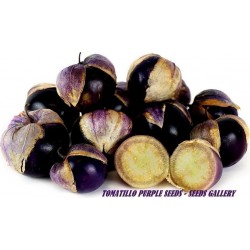
Tomatillo Seeds Physalis...
Cena
2,10 €
(SKU: VT 163 P)
Seeds Gallery EU,
5/
5
<h2><span style="text-decoration: underline; font-size: 10pt;" class=""><em><strong>Tomatillo Seeds Physalis philadelphica Purple</strong></em></span></h2>
<h3><span style="color: #ff0000; font-size: 10pt;"><strong>Price for Package of 5 seeds.</strong></span></h3>
<div><span style="font-size: 10pt;">One of the most popular and reliable tomatillo varieties delivering heavy crops on large determinate vines of rounded berries 1 to 2 inches in diameter enclosed in the thin husk of its extended calyx. The fruit ripens to a yellow colour, and has a delicious, sweet-tart flavour. Unique garden variety that's very popular in Mexican cuisine. Matures 65-75 days from germination.</span></div>
<div><span style="font-size: 10pt;">Sow in spring 1/16 inch deep. Germination takes around 6-14 days at 65-75F.</span></div>
<div><span style="font-size: 10pt;">Transplant the seedlings when large enough to handle into 3 inch pots. Grow on under cooler conditions and when about 8 inches tall, either plant in their growing position in the greenhouse or gradually acclimatise them to outdoor conditions and plant out at least 18 inches apart in a warm and sunny spot in moist, fertile well drained soil and keep watered.</span></div>
<div><span style="font-size: 10pt;">Provide support as the plants will naturally ramble. </span></div>
<script src="//cdn.public.n1ed.com/G3OMDFLT/widgets.js"></script>
VT 163 P (5 S)


Odmiana z Włoch
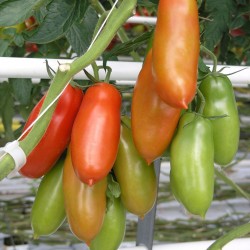
Nasiona pomidora San...
Cena
2,85 €
(SKU: VT 166)
Seeds Gallery EU,
5/
5
<h2><strong>Nasiona pomidora San Marzano Gigante (Gran Merito)</strong></h2>
<h2><span style="color: #ff0000;"><strong>Cena za Pakiet 10 nasion.</strong></span></h2>
<p>Włoski pomidor San Marzano Gigante znany jest również jako „Gran Merito”. Piękne, owalne owoce rosną w pęczkach po 6 do 10 owoców i ważą średnio od 90 do 120 g. Dojrzewają do czerwonego koloru w ciągu około 65 do 75 dni po siewie.</p>
<p>Te soczyste, pyszne pomidory mają długi okres przydatności do spożycia i są używane do sałatek i dań na zimno, a także do sosów i dań gotowanych.</p>
<p>Silne rośliny mają średnią wysokość od 90 do 100 cm i dają doskonały plon. (opóźniony wzrost)</p>
<p>Pomidor San Marzano Gigante nie jest hybrydą, nie podlega obróbce chemicznej, nie zawiera GMO i nie zawiera trucizn.</p>
VT 166 (10 S)

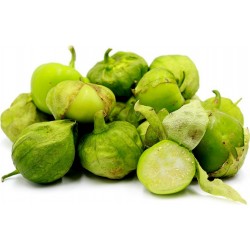
Tomatillo Seeds - Toma...
Cena
2,65 €
(SKU: VT 163 TV)
Seeds Gallery EU,
5/
5
<h2 class=""><strong>Tomatillo Seeds - Toma Verde (Physalis ixocarpa)</strong></h2>
<h2><span style="color: #ff0000;"><strong>Price for Package of 10 seeds.</strong></span></h2>
<p>Tomatillos are irreplaceable as a vegetable and part of salas, especially in Mexican cuisine, and cannot be replaced with green tomatoes. Tomatillos has the ability to thicken the sauce and soup, so other thickeners can be omitted.</p>
<p>The original distribution area of Tomatillo is Mexico. Therefore, vegetables are also called Mexican tomatoes or Mexican cherries. Tomatillo is a herbaceous and shrubby growing perennial plant with serrated leaves that can reach one to two meters in height.</p>
<p>Unlike other Phisalis species, Tomatillo is barely hairy. Its yellow flowers are dark brown to black in the middle. The champion-shaped bracts are green and purple at first and dry. Spherical fruits are like tomatoes, which are green, yellow or purple, depending on the variety. They have a sweet-sour aroma and are used for seasoning sauces, especially in Mexico and Central America. In addition, Tomatilo is mainly grown in the southern United States. Tomatillo is still relatively unknown. However, this could change quickly due to the relatively uncomplicated cultivation and their high yields.</p>
<p>As Tomatillo belongs to the plants of the tomato family, it forms its fruits best in a sheltered from the wind and in a sunny place, in loose and nutrient-rich soil. Areas with a winegrowing climate are particularly suitable for cultivation. Before planting, it proved useful to improve the soil with little compost.</p>
<p>Sowing</p>
<p>Tomatillos can be sown from mid-February to the end of March. The seeds are grown in seed pods on a window or in a greenhouse. To do this, sow the seeds in small pots with sowing soil and place them as light and warm as possible, ideally a germination temperature of 20 to 27 degrees Celsius. Keep seedlings that appear after about a week or two moistened with warm water. If the seedlings are large enough to touch, they are transferred to pots five to eight inches in size. Cure young plants in a warm and sunny place for about four to five weeks before planting them outside.</p>
<p>Unlike Andean berries, tomatillos depend not only on insect pollination but also on cross-pollinators, so at least two plants are required to harvest. Planting should be done in late May, when there is no more frost. Sow the plants very low, as the stems in contact with the soil will develop more roots. Keep the distance from plant to plant 80 x 80 centimeters, as plants grow abundantly. Regularly water the tomatillos and fertilize them every two weeks with a plant-based fertilizer, such as horse or other.</p>
<p>The first tomatillos are ready to harvest after about 70 days. The fruits grow so large that they split the protective membrane. Then they mature and fall to the ground. In some varieties, ripe fruits turn purple or golden yellow under the influence of light. The fruit is delicious sour-sweet, depending on the variety. The fruits can be eaten raw, but are mostly processed into salsa, sauces, sauces and soups. In their home country, Mexico, they are known as the main ingredient of "Salsa verde". But they can also be used in vegetable dishes. The fruits can be refrigerated for several days to several weeks.</p>
<p>You can grow Tomatillo for several years if you are wintering the plant indoors. However, since it is very sensitive to cold, it has only been grown for a year. If stored in a large flower pots, you should cut it two-thirds after harvest and hibernate in a bright place with a temperature of about ten degrees Fahrenheit. From March, you should gradually get used to the higher temperatures and sunshine before setting it outdoors.</p><script src="//cdn.public.n1ed.com/G3OMDFLT/widgets.js"></script>
VT 163 TV (10 S)






